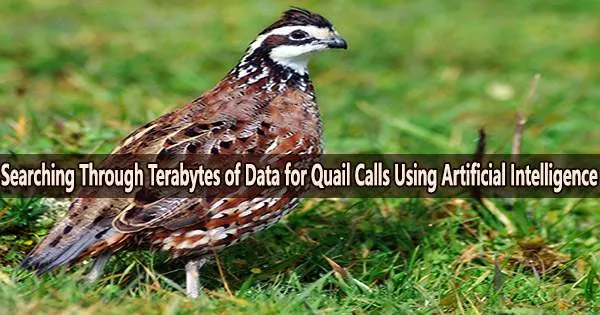The technique can be laborious, expensive, and time-consuming when states desire to estimate quail numbers.
It means spending hours in the field listening for calls. Or recording sounds in the field using a recording device and then spending hours later listening to the audio. Repeat this procedure until there is sufficient data to begin estimating the population.
But a brand-new model created by University of Georgia researchers promises to speed up this procedure. The method enables wildlife managers to quickly acquire the information they require by utilizing artificial intelligence to search through terabytes of recordings for quail sounds.
“The model is very accurate, picking up between 80% and 100% of all calls even in the noisiest recordings. So, you could take a recording, put it through our model and it will tell you how many quail calls that the recorder heard,” said James Martin, an associate professor at the UGA Warnell School of Forestry and Natural Resources who has been working on the project, in collaboration with the Georgia Department of Natural Resources, for about five years.
“This new model allows you to analyze terabytes of data in seconds, and what that will allow us to do is scale up monitoring, so you can literally put hundreds of these devices out and cover a lot more area and do so with a lot less effort than in the past.”
The model was developed over the course of around five years by Martin, postdoctoral researcher Victoria Nolan, and numerous other major contributors, who collaborated with a code writer. It also fits into a bigger trend in wildlife research, where computer algorithms are now helping with tasks that used to take humans countless hours to perform.
The model is very accurate, picking up between 80% and 100% of all calls even in the noisiest recordings. So, you could take a recording, put it through our model and it will tell you how many quail calls that the recorder heard. This new model allows you to analyze terabytes of data in seconds, and what that will allow us to do is scale up monitoring, so you can literally put hundreds of these devices out and cover a lot more area and do so with a lot less effort than in the past.
Professor James Martin
Computers are becoming more adept at distinguishing particular sounds or characteristics in images and sound recordings, for instance. For researchers such as Martin, it means hours once spent on tasks such as listening to audio or looking at game camera images can now be done by a computer, freeing up valuable time to focus on other aspects of a project.
State and federal agencies that are looking for data on their quail populations but have a tight budget for any one project may find the new tool to be a useful resource as well.
“So, I think this is something states might jump on as far as replacing their current monitoring with acoustic recording devices,” added Martin.
The Journal of Remote Sensing in Ecology and Conservation recently documented the software’s success.
Martin claimed that the software becomes increasingly “smarter” as it is used more frequently and exposed to sounds from many different locations. As it is, quail offer several different kinds of calls.
“But when the software is exposed to a variety of sounds that aren’t quail,” he said, “it’s better able to distinguish the correct calls from the ambient noises of the grasses and trees around them.”
Over time, the software will grow more discerning.
“So that’s why you have to keep giving it training data, and when you move geographies, you encounter new sounds that you didn’t train the model for,” he added. “It’s always about adaption.”





